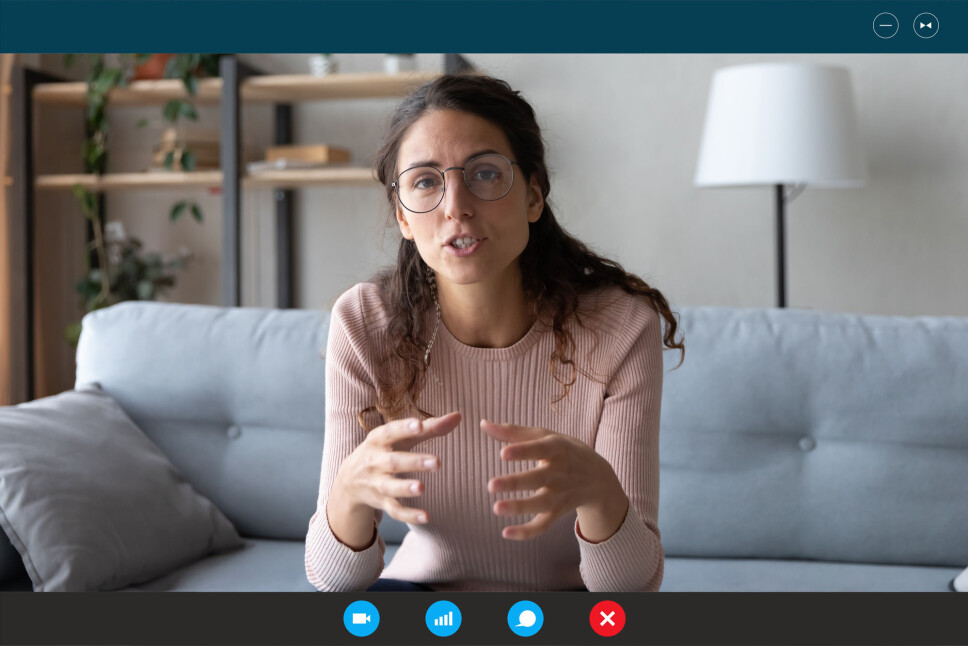This article was produced and financed by Norwegian centre for E-health research - read more

Corona gives rapid digitalisation in mental health services
The corona crisis has led to rapid digitalisation in large parts of the health services. Mental health personnel have been quick to use digital solutions to provide important follow-up to patients. What can research teach us about digital delivery of mental health services?
“In recent years, many studies have been conducted showing that e-health tools can be used to provide more accessible services, promote self-management and provide better mental health. The knowledge is available and the various health service players can safely use this”, assures senior researcher Marianne Trondsen at the Norwegian Centre for E-health Research.
Many have used digital tools for the first time during the corona crisis, while several mental health services already had an offer that has now been expanded.
Video or text
“There are many different digital offers”, explains Trondsen.
Video-based technology is often used in therapist-guided therapy or as a collaborative tool. Those of us who have worked from home in this period, have become very familiar with this.
There are also text-based tools such as chat, chat forums and online question / answer services. In recent years, there have also been some digital treatment programs and, not least, an Eldorado of self-help tools in the form of apps.
Easier to be open in a digital chat
Younger users have grown up in a digital world and are used to communicating digitally.
“For many children and young people, digital communication via text or video may be more natural than for adults. Sitting at home in a familiar environment can feel safer than in a therapist office”, says Trondsen.
In one of her research projects, a person said it was nice to have the psychiatrist hanging on a screen on the wall, at a safe distance.

“At the same time, many children and young people are reluctant to pick up the phone and call. Therefore, helplines often have chat inquiries. Text can feel safer, especially if it is anonymous. A young woman I interviewed said this: ‘I'm a writer, not a speaker,’ says Trondsen.
It can often be easier to be open anonymously about difficult feelings and themes.
“However, it is important to remember that we are different and have different preferences. The needs depend on the life situation, diagnosis, severity and where one is in the treatment. For some, the physical meeting is very important and necessary”, she emphasizes.
Digital services more accessible
Digital services provide better accessibility. The health service can offer more and equal services regardless of where people live. It is effective in terms of time spent and travel and leads to less absence from work or school.
“There is a lot of shame and stigma attached to mental health”, Trondsen says.
“Therefore, it may be easier to have contact digitally, because it will not be so visible. For people who, for example, have anxiety, video calling may be better because of the effort it takes to show up physically.”
The digital is a facilitator for treatment or follow-up. It is the content of the meeting or conversation that says something about the quality. Many digital services are good enough and can be a good replacement.
Security and privacy
As with all digital services, security and privacy are important.
“It is especially important that both parties communicate in a safe place. For example, the therapist can make sure that no one is listening to the patient where she is and that she can speak freely”, says Trondsen.
It can also be difficult to round up a conversation properly if the person you are talking to is very upset or sad. It is not as easy to comfort someone through a screen, and the physical distance can be challenging if you are seriously concerned about the person.
Beyond corona
Research from the last ten years shows that digital meetings are often good enough and that this can be part of the future health service.
“In Norway, we generally have a high level of digital expertise, and we have good conditions for using online health services”, says Trondsen.
“Insight from the corona crisis experience will be of great value to us and I predict that digital tools will become a major part of mental health services.”
———


































